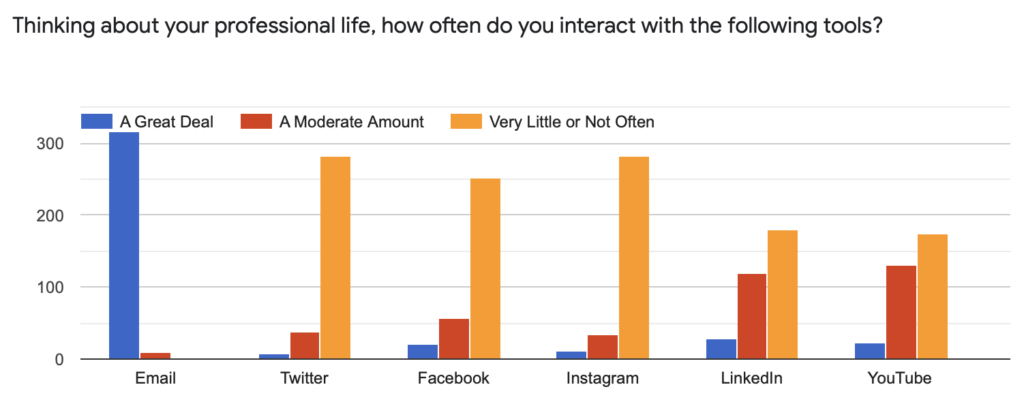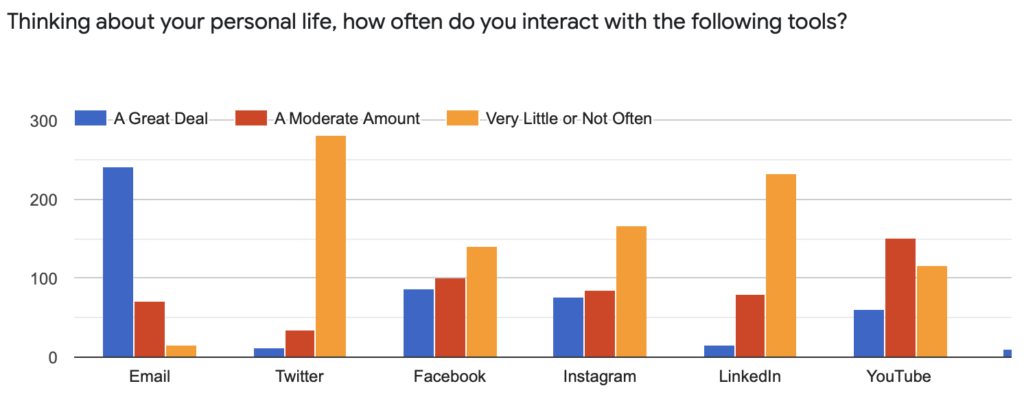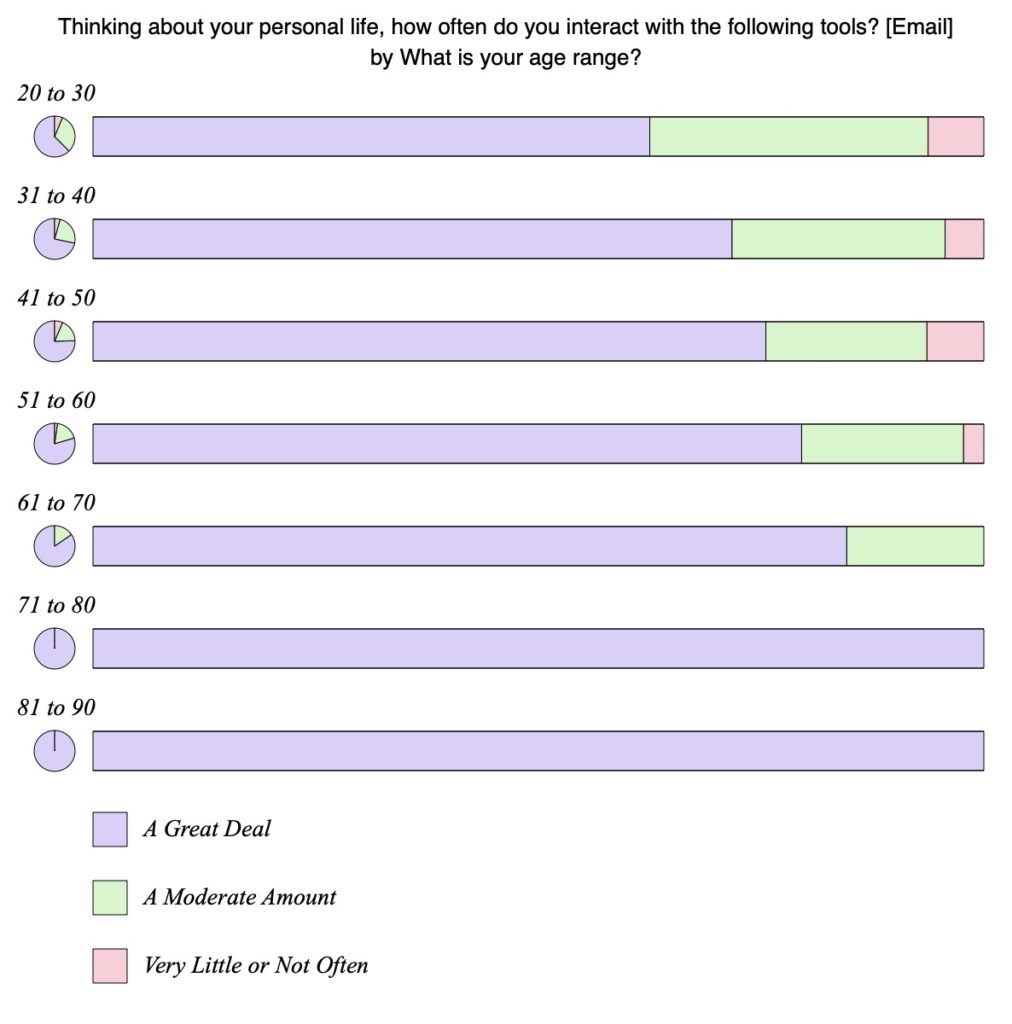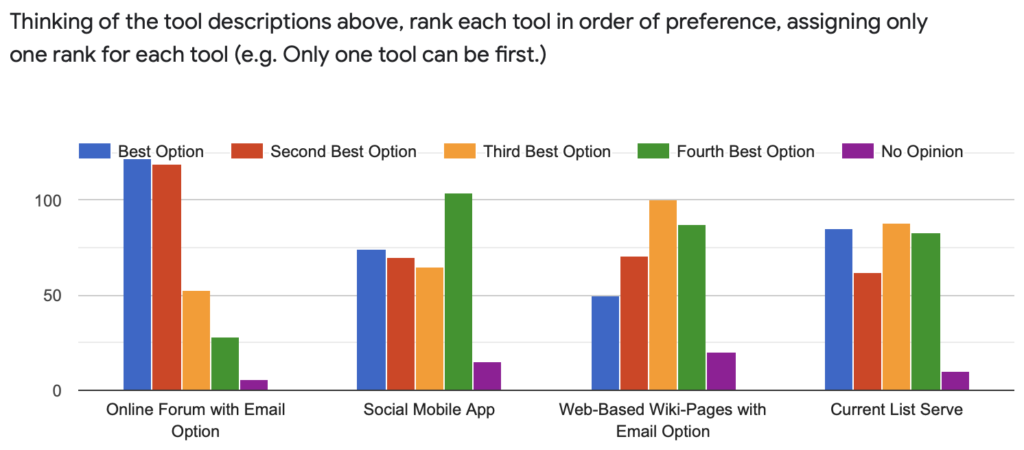Five Minute Read
We were curious about how our members utilize social media and connectivity tools, so we asked and they answered. The results are fascinating and will help us plan future efforts to support networking amongst the members of our association, the Collaborative Family Healthcare Association (CFHA). Why should you care? Well, read on and you might find some interesting tidbits around how healthcare professionals use tools compared to the rest of the population.
Favorite Go-To Connectivity Tools
Respondents to the survey (convenience self-report sample, N=311) surprised us by reporting that they really weren’t that into social media in their personal or professional lives. The most popular tool for both personal and professional use was Facebook, followed by YouTube and Instagram. Twitter, LinkedIn and Tik Tok were reported to be little used. In total about 76% of respondents reported very little to no use of the most popular tool, Facebook, for professional reasons (42.8% reported little use for personal reasons). And of course, email still appears to be king/queen.


One factor to consider in our sample is that it was heavily biased towards millennial and GenX’ers as shown by the graph below.

How does this compare to the rest of the population? Well, there is not a direct comparison available, but this data appears to show that the healthcare professionals we surveyed rely on social media a lot less than the general population and although the general preference for Facebook is similar, other tool utilization is quite different (e.g. really low Twitter utilization).
Given the differences in the sizes of the age groups it is challenging to draw firm conclusions about differences but a trend towards more email reliance with age appears evident and perhaps a slight preference for social media apps at the younger ages (but this is far from definitive in the data).

What Tools Are Preferred For Networking Professionally
Given this background we were interested in what members thought of various networking options within our association. Would members prefer to stay with the email list serve or switch to an online social media platform, web-based wiki tool or some sort of hybrid list serve and online forum option? While responses varied, we were again surprised to learn that email is still king/queen.
The most popular option was the email list serve with online forum option (option to do either or both in a synchronized fashion). Comments supported the idea that busy healthcare professionals are on email anyway so even though the list serve adds more email, it is still the best way to interact.

Interestingly, a lesser, but significant group of respondents reacted approvingly to the idea of a social media app for mobile consumption (44% of respondents ranked it first or second). No definitive association between age and tool preference was found in this analysis.
So What Does This Mean?
Well, on some level it confirms our organizational experience that people prefer email as a communication tool, but it also helps us determine possible sub-groups who might prefer alternative networking tools like a mobile social media app. So, we are going to do some hard work over the next 12 months to strategize a way to network our growing community to meet a variety of needs. It is a real conundrum for our organization because email is not ideal for long-term accumulation of knowledge and becomes less ideal the larger our organization becomes (too many threads). It is also important to note that it may be a point of emphasis for us to educate members on social media, given that the rest of the population consumes social media to a greater extent apparently than our membership, assuming this sample is representative. It’s pretty important these days to at least understand the role of digital communication and healthcare (as we have definitely experienced this pandemic).

Leave a Reply